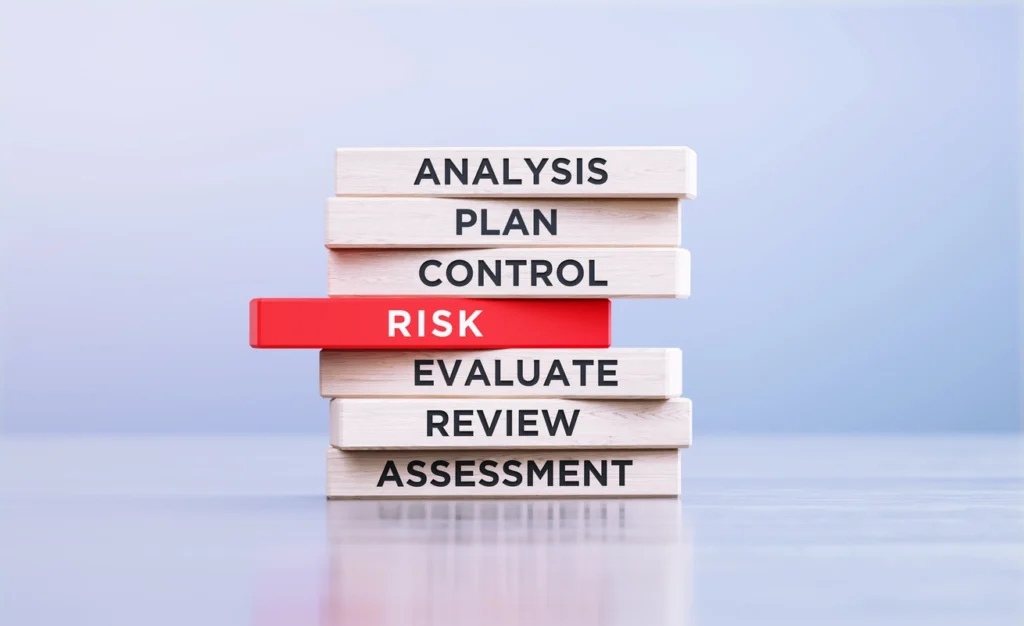Environmental concerns can significantly impact real estate deals. That’s where Phase I Environmental Site Assessments (ESAs) play a crucial role. These assessments thoroughly examine a property’s history and current condition, uncovering potential risks that could lead to financial losses or legal headaches for buyers, sellers, and lenders alike. By proactively identifying and performing environmental risk management, you safeguard your investment and protect yourself from unexpected liabilities.

Soil and Groundwater Contamination:
- Sources: Contamination can come from various sources, including manufacturing facilities, gas stations, dry cleaners, landfills, and even past agricultural practices.
- Types of Contaminants: Common contaminants include petroleum products, heavy metals (e.g., lead, mercury), solvents, pesticides, and other hazardous chemicals.
- Consequences: Contaminated soil and groundwater can pose health risks if people are exposed through drinking water or direct contact. Contamination can also migrate off-site, leading to lawsuits from neighboring property owners or regulatory enforcement actions. Remediation often involves excavating contaminated soil, treating groundwater, or implementing long-term monitoring plans.
Underground Storage Tanks (USTs):
- Prevalence: USTs were widely used to store fuel or other chemicals, especially before stricter regulations were implemented. Many older properties may have undocumented or improperly abandoned USTs.
- Leakage: USTs can leak due to corrosion, improper installation, or damage. Even small leaks over time can lead to extensive contamination.
- Financial Impact: If a leaking UST is discovered, the property owner is typically responsible for cleanup, regardless of when the leak began. Costs can easily run into hundreds of thousands of dollars or more, potentially wiping out any profit from the real estate transaction.
Asbestos and Lead-Based Paint:
- Historical Use: These materials were once common in building construction. Asbestos was prized for its fire resistance and insulation properties, while lead-based paint provided durability and vibrant colors.
- Health Hazards: Asbestos fibers, when inhaled, can cause lung cancer and other serious respiratory diseases. Exposure to lead, particularly for children, can cause developmental delays and neurological damage.
- Regulatory Requirements: Strict regulations govern the handling and removal of asbestos and lead-based paint. Specialized contractors with proper certifications are required, increasing the cost and complexity of renovation or demolition projects.
Wetlands and Endangered Species Habitats:
- Environmental Protection: Wetlands provide vital ecosystem services like flood control and water filtration. Endangered species are protected under federal and state laws.
- Development Restrictions: Strict limitations apply to activities that could impact wetlands or endangered species habitats. These restrictions can severely limit the development potential of a property, affecting its value and permitted uses.
- Due Diligence: A Phase I ESA will include a review of records and site surveys to identify any potential wetlands or known habitats of endangered species on or near the property.

Protecting Yourself with a Thorough Phase I ESA Risk Management Plan
Think of a Phase I ESA as a comprehensive environmental detective mission. A qualified environmental professional meticulously inspects the property and digs into its past, following a well-defined process:
- Site Reconnaissance: The first step is a physical inspection of the property. The environmental professional looks for evidence of potential contamination like stained soil, stressed vegetation, storage drums, or unusual odors.
- Records Review: This involves delving into government databases, historical maps, aerial photographs, and fire insurance records. These sources help reveal past uses of the property that could indicate environmental concerns.
- Historical Research: Old city directories, building permits, and property records are examined to understand the site’s complete history and identify any potential red flags.
- Interviews: The environmental professional interviews current and past property owners, tenants, and neighbors to gather insights about past activities or potential issues.
- Report: All the findings are compiled into a detailed report. This report identifies Recognized Environmental Conditions (RECs), which are potential hazards warranting further investigation (often through a Phase II ESA).
How This Protects You
- Liability Protection: Under the Comprehensive Environmental Response, Compensation, and Liability Act (CERCLA), a Phase I ESA can help you qualify for the Innocent Landowner Defense, shielding you from liability for pre-existing contamination.
- Financial Risk Mitigation: Knowing about environmental problems before you buy allows you to negotiate a fairer price, demand cleanup from the seller, or walk away from a bad deal.
- Informed Decision-Making: A Phase I ESA provides the information you need to weigh environmental risks against other factors, allowing you to make confident investment decisions.
The Benefits of Risk Management in Phase I ESAs
Investing in a Phase I ESA isn’t just about compliance – it’s a smart business strategy that offers long-term benefits:
Liability Protection
A well-documented Phase I ESA can be your legal shield. Complying with CERCLA’s requirements allows you to potentially claim the Innocent Landowner Defense, minimizing your liability for historical contamination you didn’t cause.
Financial Risk Mitigation
Imagine purchasing a property only to find out later that it has expensive contamination issues. A Phase I ESA minimizes the risk of unpleasant financial surprises after the deal is closed.
Informed Decision-making
By uncovering potential red flags early on, a Phase I ESA empowers you to make well-informed choices about your investment. You may decide to renegotiate the terms, require the seller to address issues, or even back out of an acquisition altogether.
The Power of Proactive Risk Management
In the world of real estate, knowledge is power. A Phase I ESA gives you the information you need to manage environmental risks responsibly, ultimately protecting your bottom line and safeguarding your investments for the future.

Choosing a Qualified Environmental Professional
Not all Phase I ESAs are created equal. To ensure you receive reliable results and the maximum protection available, it’s crucial to choose an environmental professional with these essential qualifications:
- Credentials and Certifications: Look for professionals who hold certifications like Professional Engineer (PE), Professional Geologist (PG), or other relevant environmental credentials. These certifications demonstrate a high level of expertise and commitment to the field.
- Experience: Seek out professionals who have a proven track record in conducting Phase I ESAs. Experience in your specific industry or geographic region is a definite plus.
- Adherence to Standards: Ensure the chosen professional strictly follows the latest ASTM E1527 standards for Phase I ESAs. These standards provide a rigorous framework for conducting assessments and offer you greater legal protection.
- Reputation: Ask for references or check online reviews. A reputable professional will provide transparent reports and be willing to answer all your questions thoroughly.
Why Expertise Matters
A qualified environmental professional won’t just check boxes; they’ll bring a deep understanding of environmental regulations and potential risks specific to your property type. Their insights can be invaluable in identifying hidden red flags and ensuring you have the information you need to make informed decisions.
Additional Tip: Look for an environmental professional who communicates clearly and is committed to providing exceptional customer service throughout the process.
Minimize Risk, Maximize Returns: Invest in a Phase I ESA
Regardless of whether you’re a buyer, seller, or lender, a Phase I ESA is a crucial investment in the success of your real estate transaction. By uncovering potential environmental liabilities early on, you gain the power to negotiate effectively, mitigate risks, and protect yourself from costly surprises.
Don’t leave your investment to chance. Contact Diablo Green today to discuss your project needs and get a personalized Phase I ESA quote. Let us help you secure your future and ensure a smooth and successful real estate transaction.
Frequently Asked Questions About Risk Management and Liability Protection in Phase 1 ESA
What if the Phase I ESA identifies a Recognized Environmental Condition (REC)?
A REC doesn’t automatically mean a property is a lost cause. It signals the need for further investigation, typically through a Phase II ESA. Phase II involves sampling (soil, groundwater, etc.) to confirm the presence and extent of contamination. Based on these results, you can renegotiate with the seller, demand remediation, or walk away if the risk management is not possible and costs are too high.
Are Phase I ESAs required by law?
While not always legally mandatory, Phase I ESAs are essential for qualifying for CERCLA’s Innocent Landowner Defense. Most lenders will also require them as a condition for financing commercial real estate deals. Even if not required, they are a wise investment for minimizing risk.
How long does a Phase I ESA take?
The timeline varies depending on property size and complexity. Typically, Phase I ESAs can be completed within a few weeks to a month. It’s important to factor this into your transaction timeline to avoid delays.
How much does a Phase I ESA cost?
Costs vary based on factors like property size, location, and the environmental professional you choose. However, the cost is usually a small fraction of the property’s value and is minuscule compared to the financial risk of not performing an assessment. Think of it as an insurance policy for your investment.
Can I perform a Phase I ESA myself?
While the ASTM standards don’t technically prohibit it, conducting a Phase I ESA yourself is strongly discouraged. Environmental professionals possess specialized knowledge, meticulous record-searching skills, and experience interpreting complex regulations. An inadequate assessment could jeopardize your legal protections and leave you exposed to significant liability.